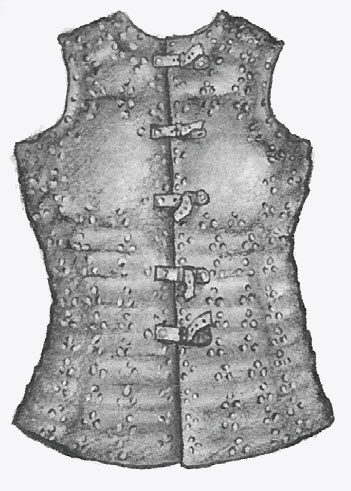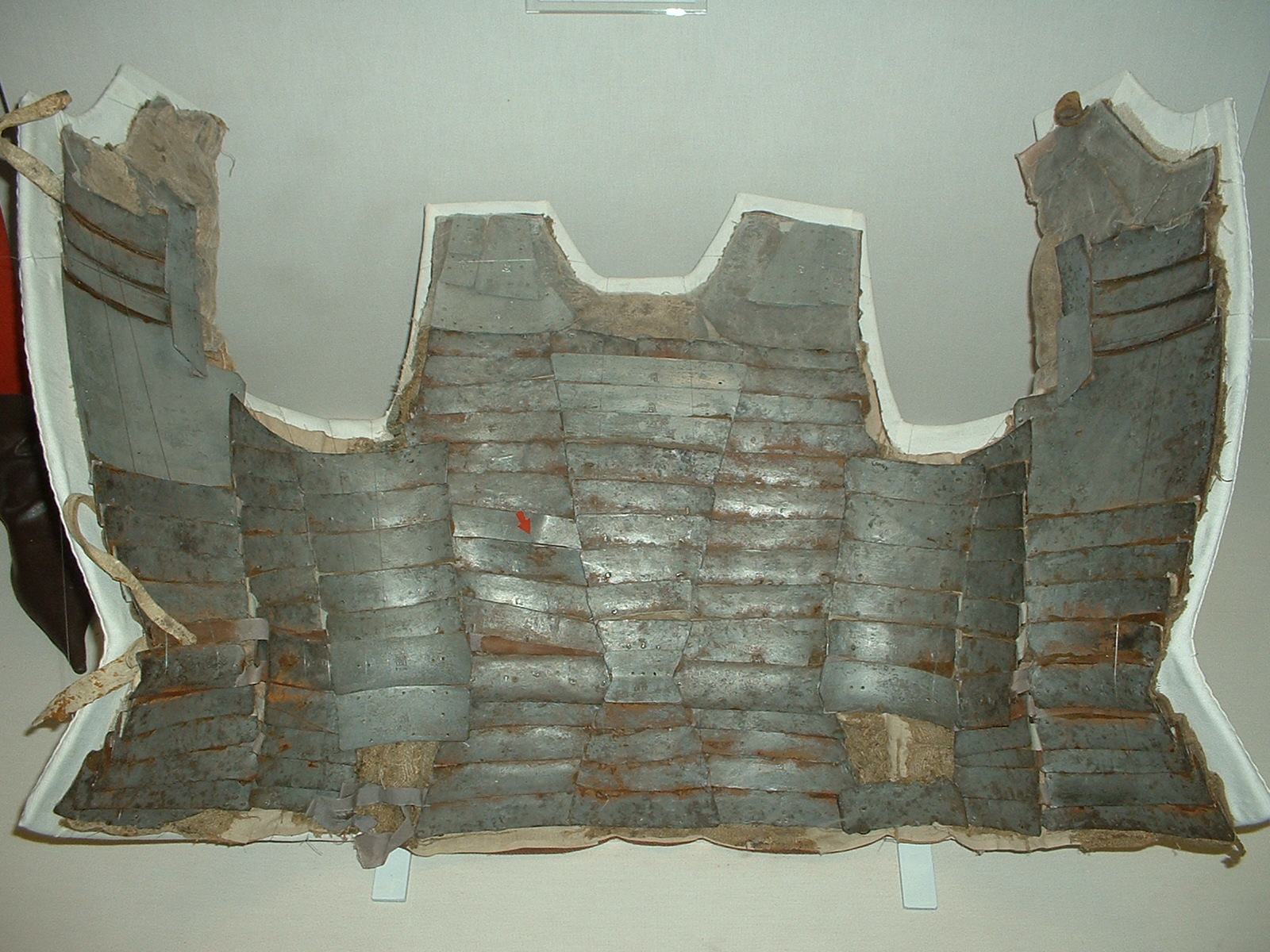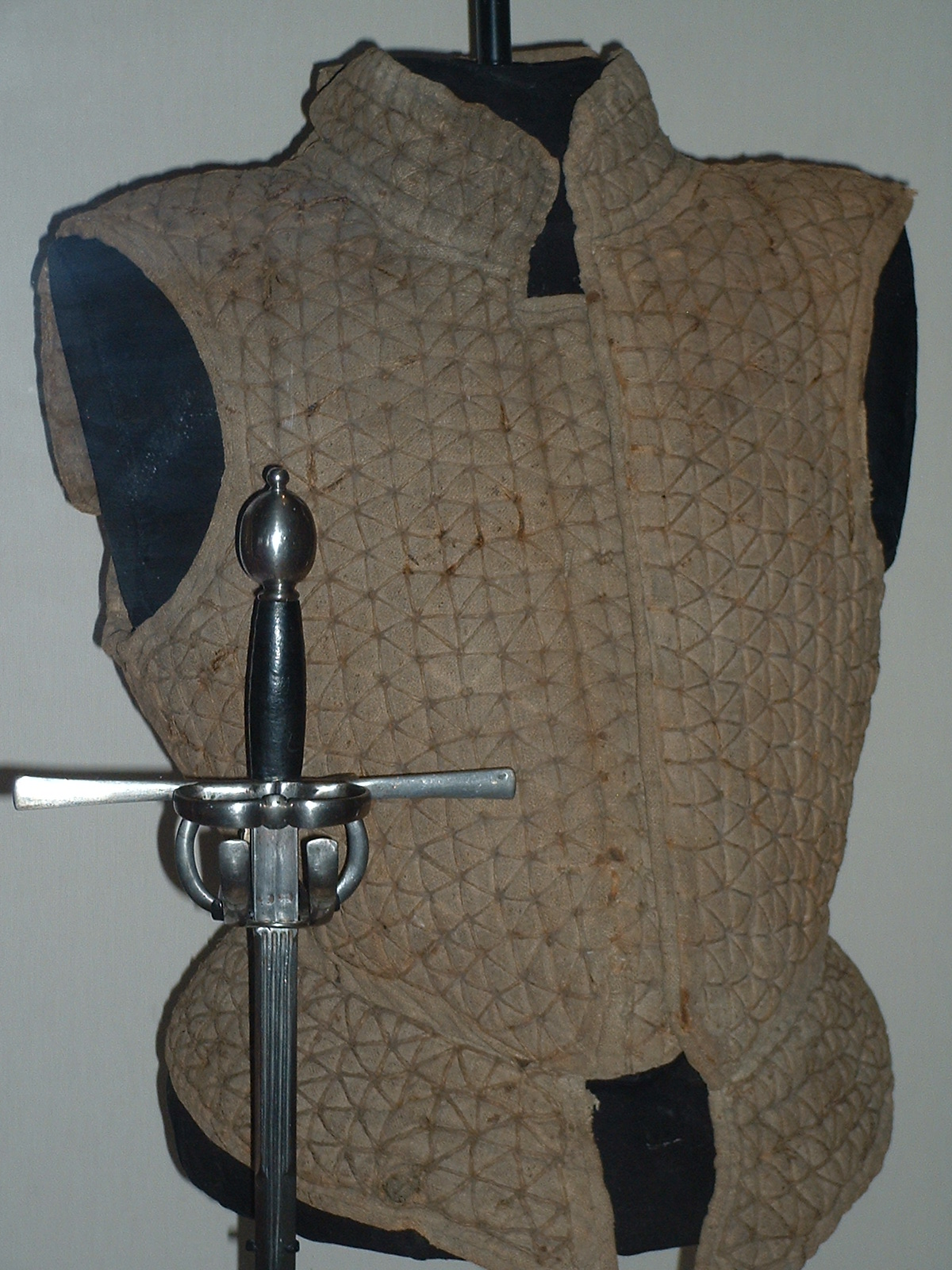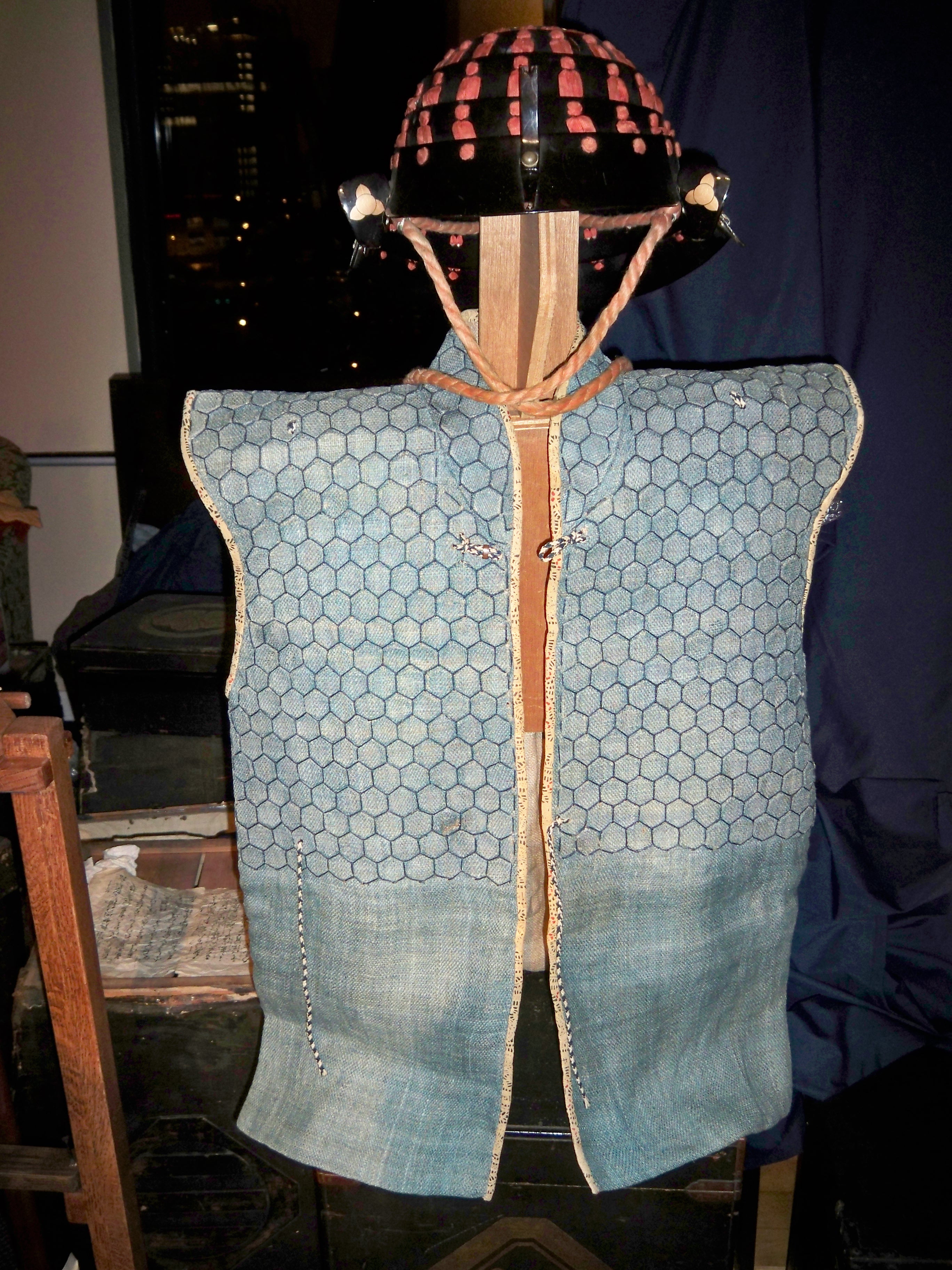Brigandine
A type of Armor
Contents
From the Rulebook
This armor is constructed from numerous shaped and fitted overlapping metal plates solidly connected along a supporting shell of heavy cloth (such as canvas, denim, or velvet) in such a way that when worn all plates are held together firmly without any gaps between them and follow the general contours of the body. This armor provides good protection against both impact and penetration.
Armor Points
Base Armor Points: 4
Maximum Armor Points: 5 (6 if both the Superior Overlap and Large Plates modifiers are used.)
Requirements
lates must be at least 1.22mm (0.05")(18 gauge) steel. At least 75% of plates must overlap by at least 10% of their surface area. Plates need only be attached along one edge but must be held firmly against each other when the armor is worn. Plates must be shaped and fitted so as to follow the general contours of the wearer.
Armor Specific Modifiers
Heavy Gauge: +1
- Each plate is at least 1.58mm (0.06")(16 gauge).
Superior Overlap: +1
- 75% of plates overlap at least 25% of their surface area.
Gambeson: +1
- This armor is worn over a Gambeson.
Large Plates: +1
- At least 50% of the surface area of the armor is protected by individual large plates rather than numerous smaller plates. Each large plate must be at least 10% of the total size of the hit location.
See Also: General Modifiers
In History
(From Wikipedia) Medieval brigandines were essentially a refinement of the earlier coat of plates, which developed in the late 12th century, typically of simpler construction made of larger plates.
Later Brigandines first appeared towards the end of the 14th century, but survived beyond this transitional period between mail and plate, and came into wide use in the 15th century, remaining in use well into the 16th. 15th century brigandines are generally front-opening garments with the nails arranged in triangular groups of three, while 16th century brigandines generally have smaller plates with the rivets arranged in rows.
Construction
(From Wikipedia) The form of the brigandine is essentially the same as the civilian doublet, though it is commonly sleeveless. However, depictions of brigandine armour with sleeves are known. The small armour plates were sometimes riveted between two layers of stout cloth, or just to an outer layer. Unlike armour for the torso made from large plates, the brigandine was flexible, with a degree of movement between each of the overlapping plates. Many brigandines appear to have had larger, somewhat 'L-shaped' plates over the central chest area.
The rivets, or nails, attaching the plates to the fabric were often decorated, being gilt, or of latten, and sometimes embossed with a design. The rivets were also often grouped to produce a repeating decorative pattern. In more expensive brigandines the outer layer of cloth was usually of velvet. The contrast between a richly dyed velvet cloth and gilded rivet heads must have been impressive and, unsurprisingly, such armour was popular with high status individuals.



